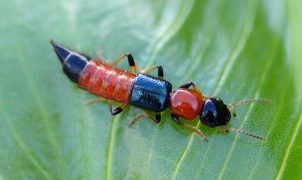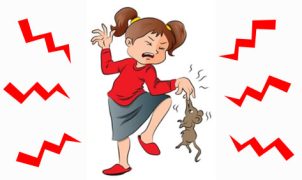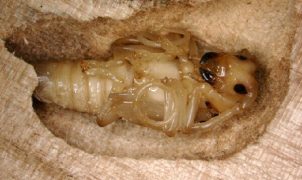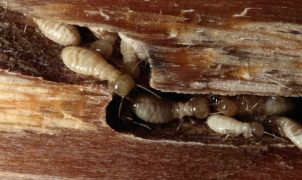Termites are fast-breeding and immensely destructive pests. Typically forming colonies, they consume wooden items, infiltrating the walls of your home, causing severe damage. When faced with such a situation, how should you address it? What are the effective and quick methods for termite control within the walls of your home? Explore the details in the article below!
1. The Harm Caused by Termites to Residential Structures
You might not be aware that termites are wood-loving insects, drawn to cellulose found in wood. As a result, they often appear in places constructed with wood, especially furniture, wooden frames, walls, and floors, where they erode these components. For homes built with bricks, termites can penetrate through hollow, porous sections of the walls and attack from within.
The destructive feeding habits of termites weaken and reduce the durability of household items. If not detected and promptly addressed, they can cause severe damage to your residence. What are the signs indicating the presence of termites inside walls, and how can you effectively eliminate them?
2. Detecting Termites Inside Walls
Contrary to the misconception that termites, being small insects, cannot cause significant harm, they can indeed erode various household items, leading to troubles if not handled promptly. Here are signs that easily identify the hidden presence of termites in your home:
- Wood Erosion, Hollow Sounds:
- Tap wooden surfaces, and if you hear a hollow sound, it’s a clear indication of termite-induced hollowness. Additionally, rubbing the surface may reveal small holes on the wood. In cases of extensive termite damage, the wood may resemble sawdust or pebbles, requiring immediate termite control within the walls.
- Deterioration of Walls:
- Termites can cause structural changes within walls, resulting in cracks and concrete debris scattered around the house or fine dust beneath the floor. In cases where wooden panels line the walls, deterioration occurs more rapidly.
- Shed Wings:
- During the transition from spring to summer, termite kings and queens engage in mating flights, shedding their wings afterward. Observing numerous discarded wings in your home indicates termite activity. In such instances, swift action is necessary to control and eliminate termites within the walls.
- “Tunnels” on Surfaces:
- Sudden appearances of mud tubes made from wood particles and soil extending vertically and branching out in multiple directions on your walls are clear signs of termites. Following these tunnels aids in locating the termite nest within your home.
- Moisture Marks:
- Termites thrive in humid and dark conditions. The presence of damp spots or water marks on walls is a telltale sign of termite activity.
- Termite Droppings:
- Termites excrete feces in the form of brown or black powder on wooden surfaces, walls, or floors. Identifying such droppings is crucial for recognizing a termite infestation.

3. Simple and Effective Strategies for Termite Control Inside Walls
Once you’ve identified signs of termite infestation within your walls, the next step is to explore effective methods for termite control. Numerous approaches exist, such as using cinnamon, lemons, potatoes, hot water, apple cider vinegar, salt, etc. However, these methods are generally suitable for small areas and may not provide long-lasting results. To eradicate these insects at their source, follow the guidelines below.
Step 1: Set Up Termite Bait Stations
Begin by identifying areas where termites frequently gather. Purchase termite bait stations and secure them along the termites’ daily foraging paths. In cases where the path lies in the middle of a wall, consider adding a hanging stand to position the bait station securely. The number of bait stations depends on the area requiring treatment and the current termite population. Typically, placing 2 to 3 bait stations along each termite path is effective, but adjust the quantity based on the specific situation.
Step 2: Apply Termite-Killing Powder
After approximately 10-15 days of placing termite bait stations, inspect the surroundings for signs of termite activity. Remove the bait stations and transfer the collected termites to a dry container. Subsequently, apply termite-killing powder, such as PMC 90, directly to the termites. Ensure even coverage, focusing on surface-exposed termites, and reposition the bait stations in their original locations. Within 1-2 days, clear the stations, as termites carrying the powder back to the nest may infect other termites.
Step 3: Direct Application of Termite Control Solution
Utilize specialized termite control solutions for efficient and rapid termite elimination within walls. Additionally, spray these solutions on wooden surfaces inside your home to prevent external termite intrusion and erosion of wooden items. Approximately one week later, the termite control solution will infiltrate confined spaces, eradicating termites at the root.
4. Recommended Termite Control Solutions:
- Termize 200SC (50ml, 250ml, 500ml)
- Termize 90DP
- PMC 90 Termite-Killing Powder
Key Considerations for Termite Control Inside Walls
Here are essential points to bear in mind when addressing termite infestations within walls:
- Regularly monitor termite activity to promptly detect and address infestations.
- Choose an appropriate number of termite bait stations and control solutions based on the termite population and affected area.
- Seek advice from professional termite control service providers for effective and safe implementation, avoiding potential health risks.
For comprehensive termite control and long-term protection against these destructive pests, these strategies provide a strategic and targeted approach.
Cre: a2zservices
























































































































































